Grow Cauliflower Backyard: Imagine harvesting your own crisp, creamy cauliflower, fresh from your garden, ready to be transformed into a delicious meal. Sounds idyllic, right? Well, it’s more achievable than you might think! For centuries, cauliflower has been a staple in gardens and kitchens worldwide, prized for its versatility and nutritional value. From its humble beginnings as a wild cabbage relative to its current status as a culinary superstar, cauliflower has a rich history.
But let’s be honest, growing cauliflower can sometimes feel like a daunting task. I know I’ve had my share of gardening mishaps! That’s why I’ve put together this guide packed with easy-to-follow DIY tricks and hacks to help you successfully grow cauliflower backyard, even if you’re a beginner. We’ll cover everything from choosing the right varieties and preparing your soil to protecting your precious plants from pests and diseases.
Why do you need these DIY tricks? Because store-bought cauliflower simply can’t compare to the flavor and satisfaction of growing your own. Plus, you’ll know exactly what’s gone into your food, avoiding harmful pesticides and chemicals. So, grab your gardening gloves, and let’s get started on your cauliflower-growing adventure!
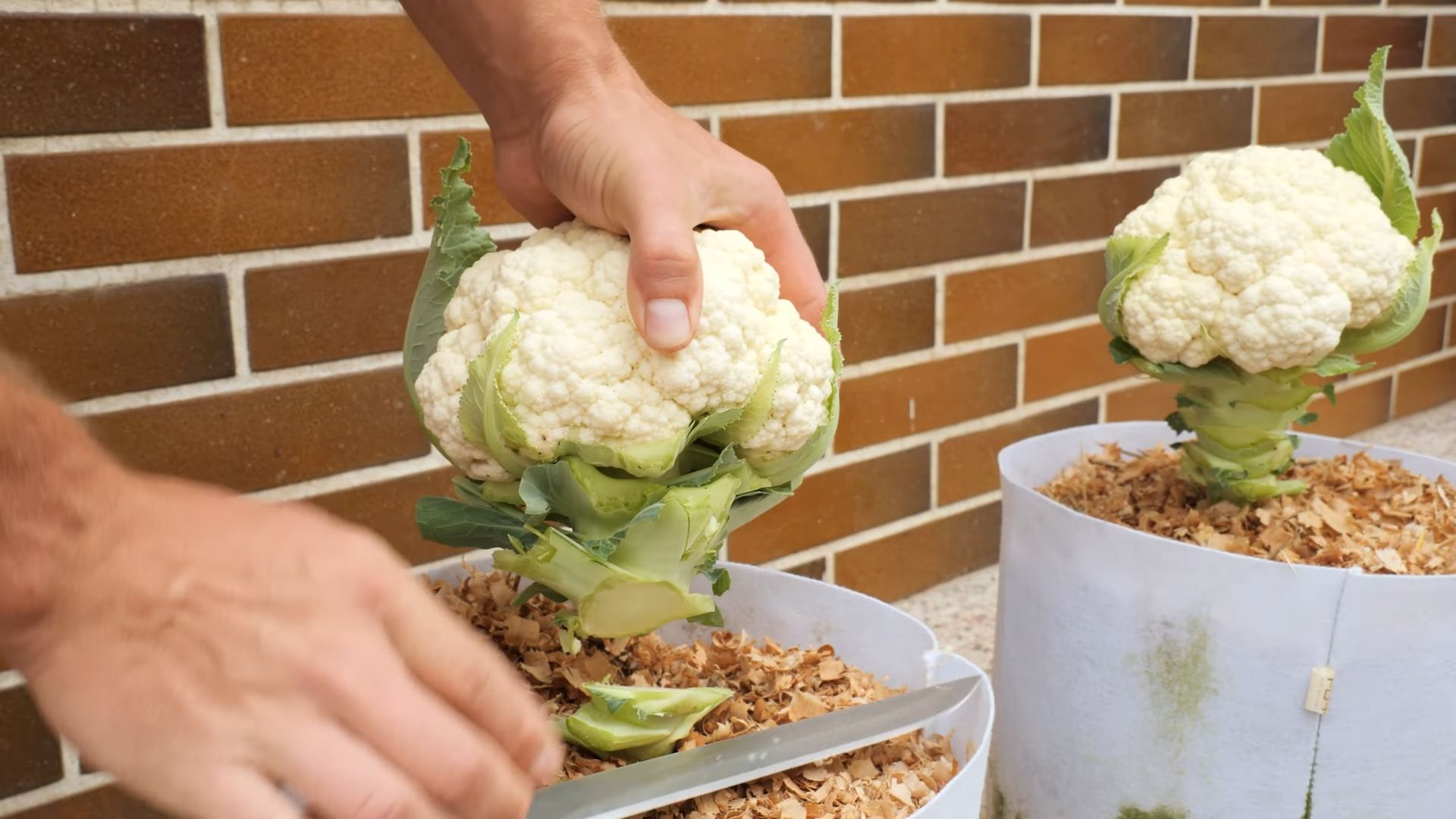
Growing Cauliflower in Your Backyard: A Comprehensive DIY Guide
Hey there, fellow gardening enthusiasts! I’m so excited to share my experience and knowledge on growing cauliflower right in your own backyard. It might seem intimidating at first, but trust me, with a little patience and these detailed instructions, you’ll be harvesting beautiful, creamy cauliflower heads in no time. Let’s get started!
Choosing the Right Cauliflower Variety
Before we even think about planting, it’s crucial to pick the right cauliflower variety for your climate and growing season. Different varieties mature at different rates and have varying levels of heat tolerance. Here’s a quick rundown of some popular choices:
* Snowball Y Improved: A classic, early-maturing variety that’s reliable and produces medium-sized, tightly packed heads. It’s a great choice for beginners.
* Cheddar: This variety is known for its vibrant orange color and slightly sweeter flavor. It’s a bit more heat-tolerant than some other varieties.
* Graffiti: If you’re looking for something unique, Graffiti cauliflower boasts stunning purple heads. It’s just as delicious as the white varieties and adds a pop of color to your garden.
* Romanesco: This heirloom variety features a striking fractal pattern and a nutty flavor. It requires a longer growing season and a bit more attention.
Tip: Check your local nursery or garden center for recommendations on varieties that thrive in your specific area.
Preparing the Soil
Cauliflower is a heavy feeder, meaning it needs nutrient-rich soil to thrive. Proper soil preparation is key to a successful harvest. Here’s what I recommend:
1. Soil Testing: Before you do anything, test your soil’s pH level. Cauliflower prefers a slightly acidic to neutral pH of 6.0 to 7.0. You can purchase a soil testing kit at most garden centers or send a sample to your local agricultural extension office.
2. Amending the Soil: Based on your soil test results, amend the soil accordingly. If your soil is too acidic, add lime to raise the pH. If it’s too alkaline, add sulfur to lower the pH.
3. Adding Organic Matter: Incorporate plenty of organic matter, such as compost, well-rotted manure, or leaf mold, into the soil. This will improve drainage, aeration, and nutrient retention. I usually add a generous layer of compost (about 2-3 inches) and work it into the top 6-8 inches of soil.
4. Fertilizing: Cauliflower needs a good supply of nitrogen, phosphorus, and potassium. Before planting, work a balanced fertilizer (e.g., 10-10-10) into the soil according to the package directions.
Tip: Well-drained soil is essential for cauliflower. If your soil is heavy clay, consider growing cauliflower in raised beds or containers.
Starting Cauliflower Seeds (Optional)
While you can purchase cauliflower transplants from a nursery, starting your own seeds gives you more control over the process and allows you to choose from a wider variety of options.
1. Timing: Start your seeds indoors about 4-6 weeks before the last expected frost in your area.
2. Seed Starting Mix: Use a high-quality seed starting mix that’s lightweight and well-draining.
3. Planting: Sow the seeds about ¼ inch deep in individual cells or small pots.
4. Watering: Keep the soil consistently moist but not waterlogged.
5. Light: Provide plenty of light. A sunny windowsill or grow lights will work well.
6. Hardening Off: Before transplanting your seedlings outdoors, you’ll need to harden them off. This involves gradually exposing them to outdoor conditions over a period of 7-10 days. Start by placing them in a sheltered spot for a few hours each day, gradually increasing the amount of time they spend outdoors.
Tip: Use a heat mat to speed up germination. Cauliflower seeds germinate best at temperatures between 70-75°F.
Transplanting Cauliflower Seedlings
Once your seedlings have developed a few sets of true leaves and the danger of frost has passed, it’s time to transplant them into your garden.
1. Spacing: Space the seedlings 18-24 inches apart in rows that are 24-36 inches apart. This will give them enough room to grow and mature.
2. Planting Depth: Plant the seedlings at the same depth they were growing in their containers.
3. Watering: Water the seedlings thoroughly after transplanting.
4. Mulching: Apply a layer of mulch around the plants to help retain moisture, suppress weeds, and regulate soil temperature. I like to use straw or shredded leaves.
Tip: Transplant on a cloudy day or in the late afternoon to minimize transplant shock.
Caring for Your Cauliflower Plants
Now that your cauliflower plants are in the ground, it’s important to provide them with the care they need to thrive.
1. Watering: Cauliflower needs consistent moisture, especially during head formation. Water deeply and regularly, aiming for about 1-2 inches of water per week. Avoid overhead watering, as this can lead to fungal diseases.
2. Fertilizing: Side-dress your cauliflower plants with a nitrogen-rich fertilizer every 2-3 weeks. This will help promote healthy growth and head development. I like to use fish emulsion or compost tea.
3. Weeding: Keep the area around your cauliflower plants free of weeds. Weeds compete with cauliflower for nutrients and water.
4. Pest Control: Cauliflower is susceptible to several pests, including cabbage worms, aphids, and flea beetles. Inspect your plants regularly for signs of infestation and take action promptly. You can use insecticidal soap, neem oil, or Bacillus thuringiensis (Bt) to control these pests.
5. Blanching (for white varieties): When the cauliflower head reaches about 2-3 inches in diameter, you’ll need to blanch it to prevent it from turning yellow or brown. To blanch, simply fold the outer leaves over the head and secure them with twine or rubber bands. This will block sunlight and keep the head white. Self-blanching varieties are available, but even these may benefit from some assistance in hot climates.
Tip: Monitor your plants closely for signs of nutrient deficiencies. Yellowing leaves can indicate a nitrogen deficiency, while purple leaves can indicate a phosphorus deficiency.
Harvesting Cauliflower
Harvest time is the most rewarding part of growing cauliflower!
1. Timing: Cauliflower is ready to harvest when the head is firm, compact, and about 6-8 inches in diameter. The exact timing will depend on the variety and growing conditions.
2. Cutting: Use a sharp knife to cut the head from the plant, leaving a few leaves attached to protect the head.
3. Storage: Store cauliflower in the refrigerator for up to a week.
Tip: Harvest cauliflower in the morning when the heads are cool and crisp.
Troubleshooting Common Problems
Even with the best care, you may encounter some problems while growing cauliflower. Here are a few common issues and how to address them:
* Buttoning: This occurs when the cauliflower head forms prematurely and remains small. It’s often caused by stress, such as lack of water or nutrients. Make sure your plants are getting enough water and fertilizer.
* Riciness: This is when the cauliflower head becomes loose and grainy. It’s often caused by hot weather or inconsistent watering. Choose heat-tolerant varieties and water regularly.
* Clubroot: This is a fungal disease that causes swollen, distorted roots. It’s more common in acidic soils. Raise the soil pH by adding lime.
* Black Rot: This is a bacterial disease that causes dark, sunken lesions on the leaves and head. It’s often spread by insects. Control pests and avoid overhead watering.
Tip: Rotate your crops each year to prevent soilborne diseases from building up.
Enjoying Your Homegrown Cauliflower
Congratulations! You’ve successfully grown cauliflower in your backyard. Now it’s time to enjoy the fruits (or rather, vegetables) of your labor. Cauliflower is incredibly versatile and can be used in a variety of dishes. Here are a few ideas:
* Roasted Cauliflower: Toss cauliflower florets with olive oil, salt, pepper, and your favorite spices, then roast in the oven until tender and slightly browned.
* Cauliflower Mash: Steam or boil cauliflower until tender, then mash with butter, milk, and seasonings. It’s a healthy and delicious alternative to mashed potatoes.
* Cauliflower Rice: Pulse cauliflower florets in a food processor until they resemble rice. Use it as a low-carb substitute for rice in stir-fries, salads, or other dishes.
* Cauliflower Pizza Crust: Combine cauliflower rice with eggs, cheese, and seasonings, then bake until firm. Top with
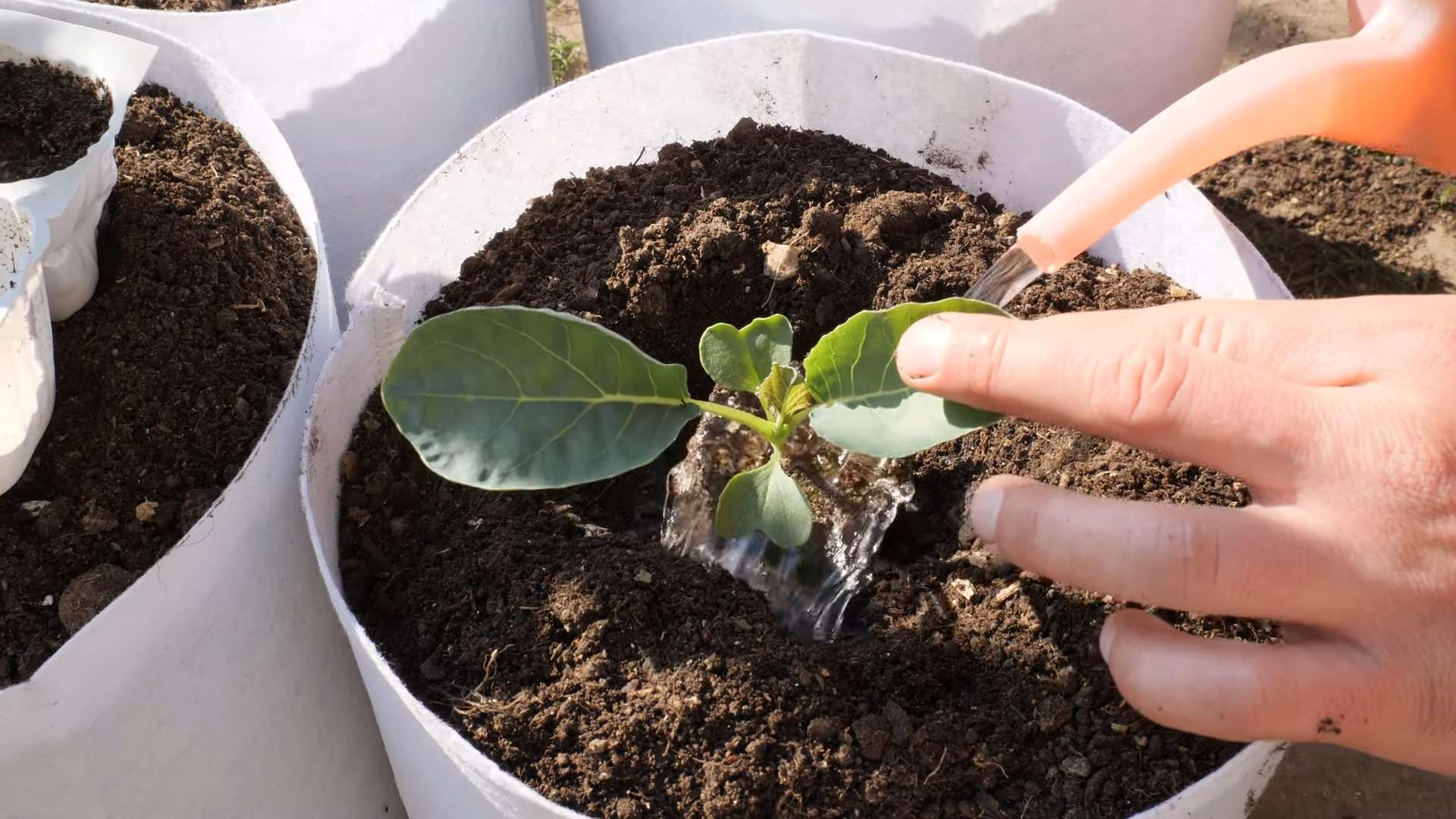
Conclusion
So, there you have it! Growing cauliflower in your backyard might seem daunting at first, but with these simple DIY tricks, you’re well on your way to harvesting your own delicious, creamy white heads. We’ve covered everything from seed starting and soil preparation to pest control and harvesting, all designed to make the process accessible and rewarding, even for beginner gardeners.
Why is this a must-try? Because nothing beats the flavor of freshly harvested, homegrown vegetables. Store-bought cauliflower simply can’t compare to the crispness and subtle sweetness you’ll achieve when you nurture your own plants from seed to table. Plus, you’ll have the satisfaction of knowing exactly where your food came from and what went into growing it – no mystery chemicals or long-distance transportation involved.
But the benefits extend beyond just taste. Growing your own cauliflower is a fantastic way to connect with nature, get some exercise, and reduce your carbon footprint. It’s a sustainable practice that contributes to a healthier planet and a healthier you. And let’s not forget the sheer joy of watching your garden flourish!
Ready to take your cauliflower cultivation to the next level? Consider experimenting with different varieties. While classic white cauliflower is a staple, you can also explore vibrant purple, orange, and green cultivars for a stunning visual display and unique flavor profiles. Romanesco broccoli, with its fractal florets, is another fascinating option that’s closely related to cauliflower and offers a similar growing experience.
Another variation to consider is succession planting. By staggering your planting dates, you can ensure a continuous harvest of cauliflower throughout the growing season. Start a new batch of seeds every few weeks to keep the fresh cauliflower coming.
Don’t be afraid to get creative with your pest control methods, too. Companion planting, using herbs like rosemary and thyme, can help deter unwanted insects naturally. You can also try creating your own organic pest sprays using ingredients like neem oil or garlic.
Ultimately, the best way to learn is by doing. So, grab your seeds, prepare your soil, and get ready to embark on your cauliflower-growing adventure. We’re confident that with a little patience and these DIY tricks, you’ll be enjoying homegrown cauliflower in no time.
We encourage you to try these methods for growing cauliflower in your backyard and share your experiences with us! Let us know what worked well for you, what challenges you faced, and any tips or tricks you discovered along the way. Your insights can help other gardeners succeed and contribute to a thriving community of homegrown food enthusiasts. Share your photos and stories on our social media pages using #HomegrownCauliflower and let’s celebrate the bounty of our gardens together! Happy gardening!
Frequently Asked Questions (FAQ)
How much space does cauliflower need to grow?
Cauliflower plants require ample space to develop their large heads. Generally, you should space plants 18 to 24 inches apart in rows that are 30 to 36 inches apart. This allows for adequate air circulation and sunlight penetration, which are crucial for healthy growth and preventing diseases. If you’re growing in containers, choose pots that are at least 12 inches in diameter and depth per plant. Crowding can lead to smaller heads and increased susceptibility to pests and diseases.
What is the best soil for growing cauliflower?
Cauliflower thrives in well-drained, fertile soil that is rich in organic matter. The ideal soil pH is between 6.0 and 7.0. Before planting, amend your soil with compost, aged manure, or other organic materials to improve its structure, drainage, and nutrient content. Cauliflower is a heavy feeder, so it benefits from soil that is consistently supplied with nutrients. Consider adding a slow-release fertilizer at planting time to provide a steady source of nourishment throughout the growing season.
How often should I water my cauliflower plants?
Consistent watering is essential for healthy cauliflower growth, especially during head formation. Aim to keep the soil consistently moist but not waterlogged. Water deeply and regularly, especially during dry periods. A good rule of thumb is to water when the top inch of soil feels dry to the touch. Mulching around the plants can help retain moisture and suppress weeds. Avoid overhead watering, as this can increase the risk of fungal diseases. Drip irrigation or soaker hoses are excellent options for delivering water directly to the roots.
What are common pests and diseases that affect cauliflower?
Cauliflower is susceptible to several pests and diseases, including cabbage worms, aphids, flea beetles, clubroot, and black rot. Regularly inspect your plants for signs of infestation or disease. Cabbage worms can be handpicked or controlled with Bacillus thuringiensis (Bt), a natural insecticide. Aphids can be washed off with a strong stream of water or treated with insecticidal soap. Flea beetles can be deterred with row covers or diatomaceous earth. Clubroot is a soilborne disease that can be prevented by maintaining a proper soil pH and practicing crop rotation. Black rot is a bacterial disease that can be prevented by using disease-free seeds and avoiding overhead watering.
When is the best time to harvest cauliflower?
Cauliflower is typically ready to harvest when the head is firm, compact, and reaches the desired size, usually 6 to 8 inches in diameter. The exact timing will depend on the variety and growing conditions. Check the seed packet or plant tag for specific maturity dates. Harvest cauliflower in the morning when the heads are cool and crisp. To harvest, cut the stem just below the head, leaving a few leaves attached for protection.
How do I prevent cauliflower heads from turning yellow?
Cauliflower heads can turn yellow if exposed to too much sunlight. To prevent this, blanch the heads by tying the outer leaves together over the developing head when it reaches about 2 to 3 inches in diameter. This will shield the head from the sun and keep it white and tender. Check the heads regularly and harvest when they are ready, as blanching can also promote rot if left for too long.
Can I grow cauliflower in containers?
Yes, you can successfully grow cauliflower in containers, provided you choose a large enough pot (at least 12 inches in diameter and depth) and use a well-draining potting mix. Container-grown cauliflower may require more frequent watering and fertilization than plants grown in the ground. Choose a sunny location that receives at least 6 hours of direct sunlight per day.
What are some good companion plants for cauliflower?
Companion planting can help deter pests, attract beneficial insects, and improve the overall health of your cauliflower plants. Good companion plants for cauliflower include herbs like rosemary, thyme, and sage, which can repel cabbage moths. Marigolds can also help deter nematodes and other soil pests. Legumes like beans and peas can fix nitrogen in the soil, benefiting cauliflower’s growth. Avoid planting cauliflower near broccoli, Brussels sprouts, or other members of the cabbage family, as they can attract the same pests and diseases.
How do I store harvested cauliflower?
To store harvested cauliflower, trim off any excess leaves and place the head in a plastic bag in the refrigerator. Cauliflower can be stored for up to a week in the refrigerator. For longer storage, you can blanch and freeze cauliflower florets. To blanch, cut the cauliflower into florets and boil them for 3 minutes. Then, immediately transfer them to an ice bath to stop the cooking process. Drain well and freeze in a single layer on a baking sheet before transferring to freezer bags or containers.

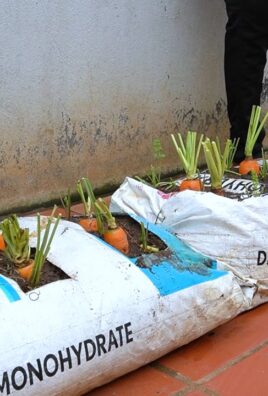
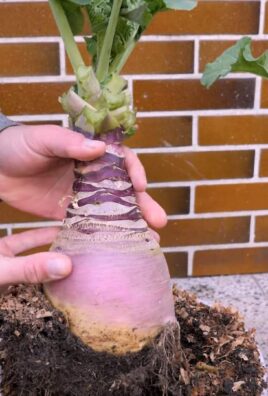
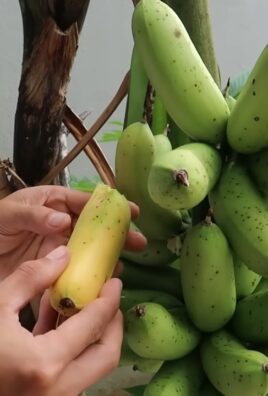
Leave a Comment